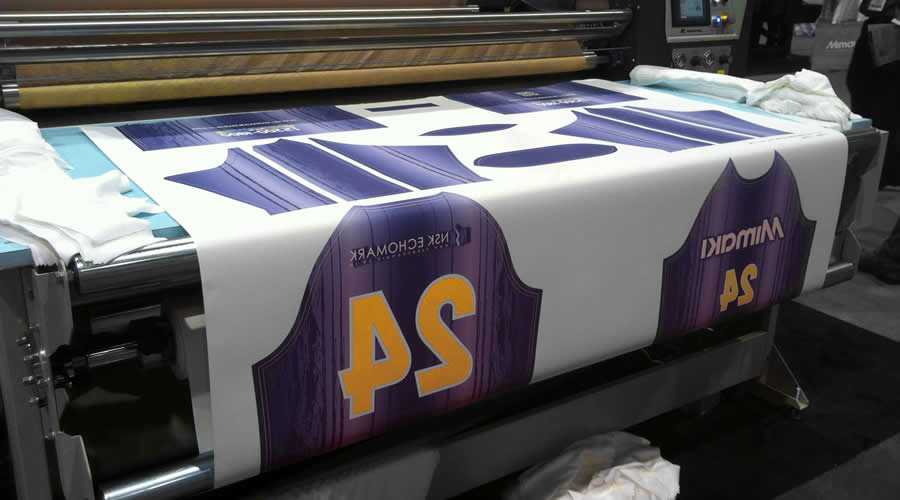How Screen Printing Transforms the Branded Clothing Market
A Comprehensive Guide to the Various Kinds Of Towel Printing Methods
Each approach, from the careful craftsmanship of block printing to the quick performance of screen printing, offers one-of-a-kind purposes and uses unique benefits. Digital printing's flexibility and environmental consciousness stand in raw comparison to the speedy modification of warmth transfer printing.
Block Printing
Block Printing, one of the oldest approaches of textile decoration, has a rich history that dates back to old civilizations. The procedure entails carving intricate designs into wood blocks, which are after that dipped in color and pressed onto fabric to produce patterns.
The precision and workmanship associated with block printing make it a labor-intensive process, yet it additionally permits for a high level of personalization. Artisans can develop unique patterns by integrating different blocks or varying the application of color. This adaptability has actually contributed to the enduring popularity of block printing in both modern and standard fabric style.
Block printing is specifically valued for its visual high qualities, including the minor variations in pattern and color that arise from the hand-printing procedure. These blemishes offer a special character to each piece, identifying it from mass-produced materials. In spite of advancements in modern-day printing innovations, obstruct printing stays a cherished strategy, commemorated for its historic importance and artistic worth.
Display Printing
Screen printing, another noticeable textile decor technique, has actually revolutionized the industry with its performance and adaptability. This technique involves creating a stencil, understood as a display, and using it to use layers of ink on the printing surface. Each shade in the style calls for a separate screen, which enables lively and elaborate multi-colored prints.

One of the essential advantages of display printing is its versatility to numerous kinds of fabrics, including cotton, polyester, and blends. This technique is specifically appropriate for large-volume orders because of its cost-effectiveness and rate. The resilience of the prints is another significant benefit, as the ink bonds well with the fabric, making sure resilient designs that endure several cleans.
When dried, the layout is transferred onto the emulsion-coated screen using a UV light source. Ink is then pressed through the stencil onto the material making use of a squeegee.
Display printing is widely utilized in the style industry, promotional items, and custom-made garments. Its ability for high-quality, in-depth prints protects its condition as a keystone strategy in textile printing.
Digital Printing
Digital printing has actually promptly arised as an innovative strategy in the textile industry, leveraging innovative technology to produce high-resolution styles directly onto fabric. Unlike conventional techniques, digital printing utilizes inkjet printers to deposit pigment or dye-based inks onto textiles, enabling lively and intricate patterns with an amazing level of detail and shade precision.
Among the primary advantages of electronic printing is its flexibility. This approach permits on-demand printing, which dramatically reduces waste and minimizes inventory prices. Furthermore, it supports brief runs and custom-made layouts, making it perfect for custom tasks and limited-edition collections. The elimination of displays my site and various other configuration requirements better improves performance, decreasing production time and labor prices.
Furthermore, electronic printing is eco-friendly. sublimation printing. It makes use of water-based inks and needs less water and energy contrasted to traditional Get More Info methods, lining up with lasting practices. The accuracy of electronic printing also allows the use of a wider variety of textiles, including cotton, silk, polyester, and blends, guaranteeing flexibility throughout different applications
Warm Transfer Printing
Exactly how does warmth transfer printing revolutionize material design? Warm transfer printing involves using heat and stress to move a style from a specifically created paper onto textile.
Among the key advantages of heat transfer printing is its ability to produce premium, thorough pictures promptly and efficiently. It is especially appropriate for tiny production runs and custom-made orders, making it a preferred selection for customized clothing and marketing things. In addition, this strategy is functional, accommodating various sorts of textiles including cotton, polyester, and blends.
Moreover, warmth transfer printing is relatively cost-efficient contrasted to other methods, as it needs minimal setup and reduced preliminary financial investment - Branded clothing. This cost, combined with its ability for creating lively, durable prints, emphasizes its essential function in modern fabric design

Dye Sublimation Printing
Dye sublimation printing, an advanced material printing method, provides unrivaled vibrancy and long life for layouts on different synthetic textiles. The published transfer paper is then placed on the fabric, and both are subjected to high warm and stress utilizing a warm press.
One of the vital advantages of dye sublimation printing is its capacity to produce continuous-tone prints with lively shades and elaborate information. Unlike various other printing methods, the dye comes to be part of the material instead than resting on top of it, resulting in a soft and breathable surface.
Verdict
Block printing is admired for its artisanal high quality, while screen printing is beneficial for high-volume production. Digital printing offers flexibility and environmental benefits, whereas heat transfer printing is perfect for rapid customization.
Each method, this contact form from the meticulous craftsmanship of block printing to the rapid performance of display printing, offers one-of-a-kind functions and uses unique benefits. Digital printing's adaptability and ecological awareness stand in plain contrast to the swift customization of warmth transfer printing. Regardless of developments in contemporary printing innovations, obstruct printing continues to be a valued method, celebrated for its historic relevance and creative value.
Dye sublimation printing, an innovative material printing method, offers unparalleled vibrancy and durability for styles on various artificial materials. Digital printing provides convenience and ecological benefits, whereas warmth transfer printing is optimal for rapid modification.